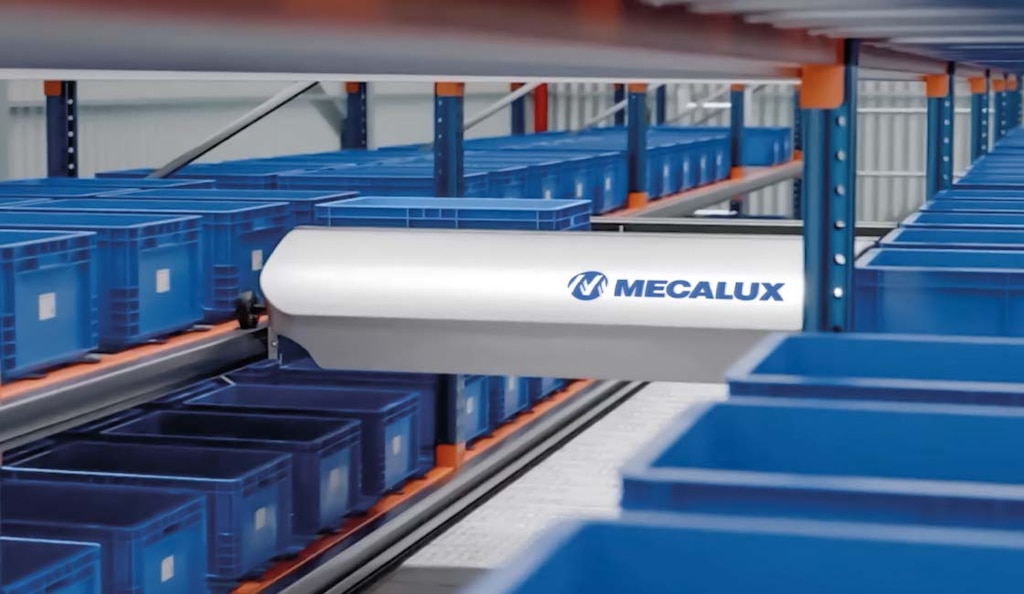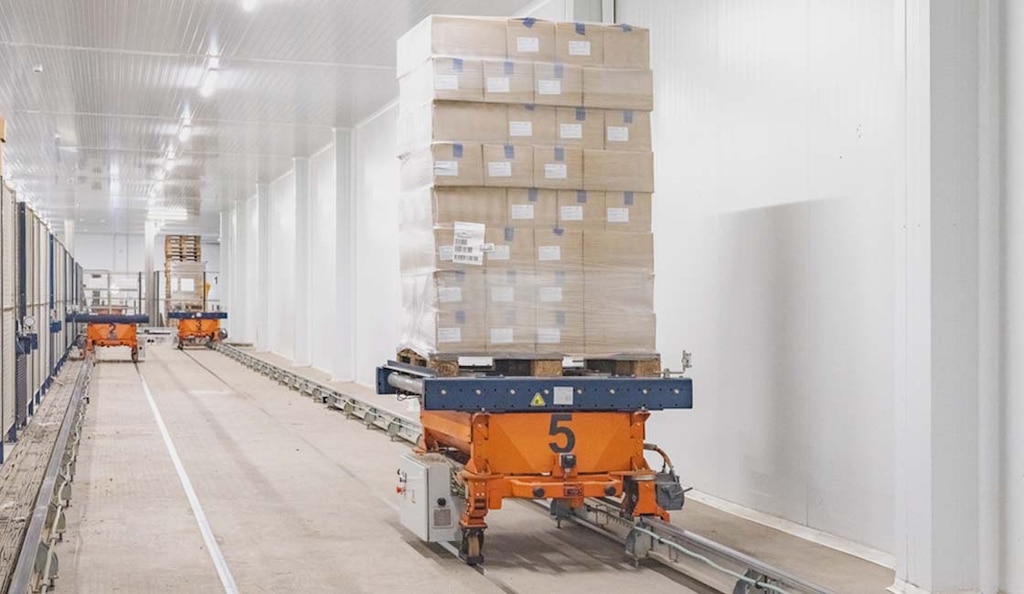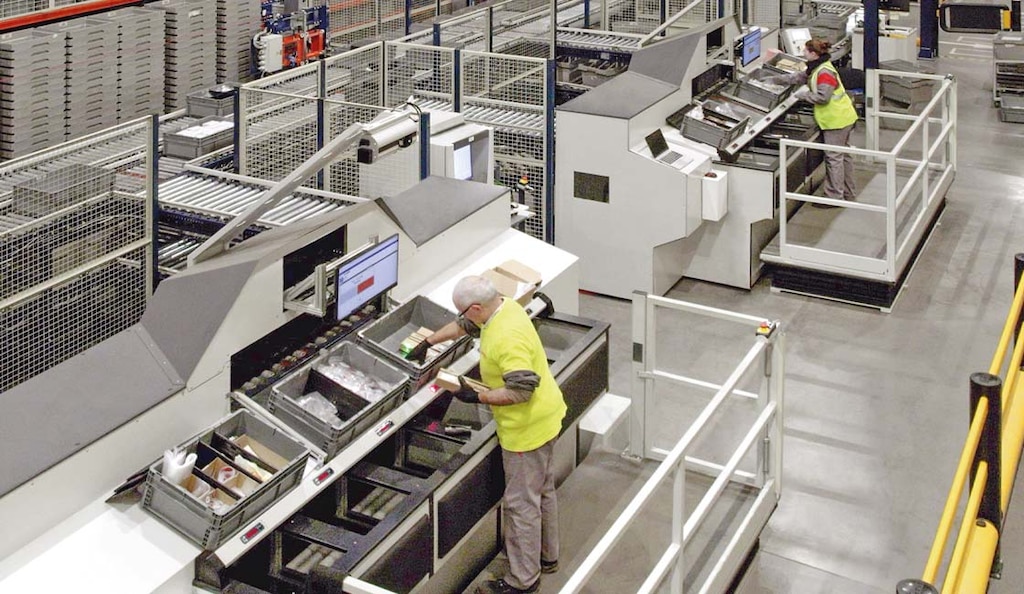
Automated order picking and how it boosts order fulfillment
Automated order picking is the next step in the evolution of order fulfillment, a vital supply chain process. In a landscape where speed and efficiency are critical competitive differentiators, more and more companies are adopting advanced technologies that transform their logistics operations. Robots, intelligent internal transport systems, and warehouse management software work together to accelerate product picking, minimize errors, and optimize delivery times.
In this post, we explore what automated order picking is and how it works. We also cover its benefits, the levels of automation available, and practical examples that show its impact on modern logistics.
What is automated order picking?
Automated order picking is the process of putting together orders in a warehouse using automated systems and technologies. This approach greatly reduces reliance on manual labor for locating and retrieving the products needed for each order.
This type of picking combines advanced technologies with intelligent management systems. Using equipment such as conveyors, stacker cranes, and more sophisticated solutions like picking robots and autonomous mobile robots (AMRs), companies can locate and transport products without manual intervention. At the same time, a warehouse management system (WMS) coordinates the entire workflow, assigning priorities and streamlining movements throughout the facility. This synergy between hardware and software makes order fulfillment faster and more accurate.
How automated order picking works
In an automated warehouse, the picking process can be summarized in four stages:
- Product retrieval. Automated equipment — handling both cases and pallets — collects products from their storage locations and places them onto conveyors.
- Transport to pick stations. Conveyors carry the goods to workstations. In some cases, AMRs also perform this movement, operating safely alongside people and other machines.
- Order assembly. When cases or pallets arrive at the pick stations, associates sort the items according to each order. To speed up this task, high-performance pick stations often incorporate visual aids such as put/pick-to-light systems, which indicate which product to retrieve and where to place it. In more high-tech warehouses, this stage can be fully automated using picking robots.
- Coordination via software. The WMS manages the entire operation. It organizes the flow of goods, sends instructions to associates and machines, and facilitates continuous order fulfillment.

Benefits of automated order picking
Automated order picking offers the following advantages:
- Greater productivity. Automatic handling equipment operates continuously and at higher speeds, enhancing a logistics facility’s overall performance.
- Reduced errors. Machines complete orders with precision, minimizing returns and ensuring customer satisfaction.
- Scalability. Automated solutions can be easily expanded or adapted to handle fluctuations in demand or business growth.
- Simultaneous order processing. Automated solutions can manage multiple orders at once, making them ideal for warehouses with a wide variety of SKUs or peak activity periods.
- Excellent space utilization. Automated systems are designed to operate in compact spaces, storing a higher volume of goods without expanding the footprint.
- Cost savings. Automation optimizes available resources by eliminating unnecessary movement, preventing errors, and making better use of infrastructure.
Levels of automation in order picking
Picking accounts for a large part of a logistics facility’s operational effort. As demand grows, companies often evolve from semi-automatic methods that support associates toward fully automated order picking systems.
- Basic automation. This semi-automated level combines human intervention with technology to improve warehouse efficiency. Operations are organized using a WMS and assisted by tools such as pick-to-light, put-to-light, or pick-by-voice systems, which guide associates to locate and pick products more quickly.
- Advanced automation. In this scenario, automated handling equipment such as conveyors and stacker cranes brings items to associates following a goods-to-person strategy. These systems limit manual movements and human intervention in order processing.
- Full automation. This is the most advanced level of automated order picking. The handling equipment above is complemented by AMRs and robotic arms, capable of operating continuously 24/7 while slashing picking errors.

How to implement an automated order picking system
Automating your picking process is a powerful way to boost your logistics competitiveness. However, not every facility needs the same level of technology, nor can it be deployed overnight. Adopting these solutions should be gradual and strategic, ensuring that each step is both profitable and sustainable over time:
- Assess your needs. Start by analyzing your warehouse operations and setting clear objectives. This evaluation should consider factors like order volume and frequency, SKU variety, demand peaks, and growth expectations. With this insight, your company can determine the right level of automation and plan an investment that delivers real value in the medium and long term.
- Secure your technology investment. Once goals and priorities are defined, it’s essential to commit to the technology needed to automate order picking. Selecting equipment and software should be seen as a strategic move that increases your operational capacity and strengthens competitiveness over time.
- Choose the right technology. The appropriate solution will depend on your facility’s characteristics and goals. Decide whether semi-automated systems that support associates, equipment such as conveyors and stacker cranes, or advanced technologies like AMRs and robotic arms are the best fit.
- Install a WMS. This software plans and organizes warehouse activities, streamlines pick paths, and assigns tasks intelligently to both associates and automated equipment. It also tracks inventory in real-time to prevent stockouts, improve decision-making, and enhance order traceability.
- Train your staff. Automated order picking transforms the role of warehouse associates. To fully leverage the technology, it’s crucial to train your team on using automated systems, WMS software, and human-machine interaction procedures.
- Monitor performance. Continuously tracking your automated order picking system is key to spotting opportunities for improvement. This includes updating software when necessary and implementing changes that maximize workflow and maintain efficiency.

Technologies powering automated order picking
Comprehensive automated order picking technologies combine handling equipment, warehouse management software, and advanced storage systems into a single, integrated ecosystem. As an end-to-end provider, Interlake Mecalux designs tailor-made projects featuring conveyors, stacker cranes, assisted-picking systems, AMRs, and robotic arms, all coordinated by Easy WMS. This holistic approach helps companies raise productivity, reduce errors, and scale their automation level according to business requirements.
Interlake Mecalux’s automated order picking solutions integrate advanced technologies such as:
- Easy WMS. Interlake Mecalux’s warehouse management system coordinates all automated order picking operations and oversees the interaction between the automatic elements involved. It also optimizes picking routes, monitors inventory in real time, and adapts to changing business needs.
- AS/RS for pallets. An automated storage and retrieval system (AS/RS) systematically moves large pallet volumes, ensuring fast, safe, and efficient access to goods.
- Stacker cranes for pallets. These machines handle pallets automatically, removing them from storage as needed to fulfill orders. They keep inventory constantly moving.
- Pallet Shuttle. Using a motorized shuttle, this system manages pallet loading and unloading in deep-storage channels. It can operate in three modes: semi-automatically (with forklifts), automatically (with stacker cranes and conveyors), or as a 3D Automated Pallet Shuttle, its most advanced version. The 3D APS uses autonomous, multidirectional shuttles to maximize storage capacity, productivity, and flexibility.
- Conveyors. Integrated with Easy WMS, these enable a smooth product flow to pick stations where orders are assembled.
- Electric monorail systems. Whether floor-mounted or overhead, these connect storage areas with order picking zones.
- AS/RS for boxes. This solution optimizes picking of small and medium-sized products with dynamic and reliable robotic box handling.
- Mini-load system. This automates the storage and handling of small items.
- Shuttle System. This solution features motor-driven shuttles that move inside racking to handle cartons and supply pick stations at a very high pace.
- High-performance pick station. Designed to efficiently handle multiple orders at once, this system provides direct access to the maximum number of totes and bins needed for picking. Associates can perform up to 1,000 picks per hour and assemble six orders simultaneously.
- AMRs. Autonomous mobile robots increase order picking productivity by automating internal goods transport. They can operate in three modes: goods-to-person, delivering items to pick stations; shelf-to-person, moving entire racks to associates; or person-to-goods, following employees to relieve them from using order picking carts.
- Picking robots. With their robotic arms, these machines automatically transfer products between boxes with excellent precision. They can operate autonomously in high-performance pick stations or work alongside associates.
By combining these technologies, companies can tackle today’s logistics challenges with solutions tailored to their specific picking operations.

Real examples of automated order picking in action
Businesses across multiple sectors rely on the Mecalux Group’s automated order picking solutions to enhance their logistics operations. Here are five real cases that show how combining automated systems with Easy WMS has increased order fulfillment capacity:
- SAM Outillage (France). In this tool manufacturer’s warehouse, Easy WMS syncs the movements of automated handling equipment. A mini-load system brings boxes to pick stations so that associates don’t have to move around the facility. Screens at the stations guide these employees through the process step by step.
- HAVI (Portugal). This logistics provider’s distribution center features two Mecalux automated warehouses managed by Easy WMS. In the freezer store, all operations are fully automated. The Pallet Shuttle, stacker cranes, conveyors, and transfer cars supply two manual pick stations and one automated station with the items needed for each order. Meanwhile, an anthropomorphic robot handles entire layers of high-turnover products.
- Agro-Masz (Poland). The agricultural machinery manufacturer handles small parts in a mini-load system connected to a high-performance pick station. Easy WMS guides associates through order picking, minimizing errors that could lead to customer complaints.
- Hispanox (Spain). This stainless-steel bolt manufacturer’s warehouse has seven pick stations equipped with robotic arms, computers, and RF scanners. Stacker cranes and conveyors supply goods directly to associates, while Easy WMS coordinates order picking by specifying exact quantities. Automation has increased the number of order lines prepared by 30%.
- Manitou (France). The material handling, aerial lift, and earthmoving equipment company upgraded its Ancenis logistics center to accelerate order picking. Mecalux’s Shuttle System, high-performance pick stations, and Easy WMS enable two associates to process 500 order lines per hour.
Automation: Driving warehouse competitiveness
Automated order picking is more than just a tech trend — it’s a strategy to strengthen logistics competitiveness. By integrating automated systems with warehouse management software, your company will achieve faster, more reliable, and more adaptable processes. As a result, it will be well-equipped to meet growing market pressures without compromising service quality. Investing in these solutions means preparing your facility to face today’s — and tomorrow’s — supply chain challenges.
Automated order picking in 5 questions
What is automated order picking?
Automated order picking is the use of robotic systems and software to prepare orders for shipment. It combines material handling equipment (such as stacker cranes and conveyors) with a warehouse management system that organizes routes, assigns tasks, and ensures faster, more accurate, and more efficient processes.
What are the benefits of automated order picking?
Automated order picking raises productivity by enabling orders to be filled more quickly. It also reduces errors, leading to greater delivery accuracy and happier customers. At the same time, it optimizes space and resource usage, maximizing storage capacity. Together, these advantages translate into higher operational efficiency, cost savings, and stronger business competitiveness.
What types of automated order picking are there?
Basic (or semi-)automation combines human input with support technologies such as pick/put-to-light systems. Automation uses conveyors and stacker cranes to deliver products to associates. And full automation integrates advanced solutions such as AMRs and robotic arms, capable of running continuously to maximize efficiency and accuracy.
Is automated order picking suitable for all warehouses?
Automated order picking can be implemented in any logistics facility, but its adoption will depend on order volumes, SKU variety, and demand peaks. Deployment should be gradual and tailored to each warehouse. First, a company should assess its needs and objectives to guarantee the investment in new technologies delivers long-term value.
Which systems are used in automated order picking?
Logistics facilities can integrate automated handling equipment such as stacker cranes, conveyors, electric monorail and shuttle systems, high-performance pick stations, AMRs, and robotic arms. All these systems work together under the warehouse management system, which organizes workflows, streamlines routes, and provides order traceability.
